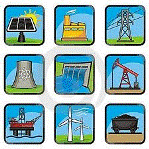Department of Agricultural Economics: Undergraduate Research
Date of this Version
Fall 12-18-2018
Document Type
Article
Citation
Op-Ed from ENSC 230. Energy and the Environment: Economics and Policy, University of Nebraska-Lincoln, Department of Agricultural Economics, Fall 2018
Abstract
Finding and providing ways to produce energy in an environmentally clean way is becoming a major push for countries all around the world today. Renewable energy provides a clean way to produce energy efficiently without using our planets non-renewable resources. Renewable energy has been growing substantially in the United States in the last decade and is making its way towards becoming a major energy production method. So, what is stopping the United States from implementing renewable energy production into our country at a mass scale?
There are many barriers that are keeping renewable energy from becoming a main source of energy production. According to Larry Alton of Renewable Energy World, some of these barriers include but are not limited to; our dependence on fossil fuels, the cost of renewable energy, bureaucratic decision making, lack of available technology, and lack of public demand (Alton, 2017).
With the Trump administration now at the helm of our country, climate change has been questioned and doubts have been casted that fossil fuels have much contribution to it at all. Rick Perry, the current United States Secretary of Energy, has said that it is “foolish” for the United States to move from fossil fuels too soon and go completely green. Also, the trump administration has pushed towards decreasing funding towards research and development of clean energy technologies and continuing on with large scale fossil fuel energy production.
This could have a direct impact on you and your lifestyle as the pollution from fossil fuels and other non-renewable sources of energy are contributing to climate change and causing environmental damages such as; increased severe weather, droughts, intensifying tropical storms, etc.
So, how do renewables such as solar and wind energy compare against fossil fuels such as natural gas and coal, in terms of the costs of building the facilities and operating/maintaining them? Let’s take a look at the cost comparison of non-renewables to renewables.
(Figure here)
According to Energy Innovation Policy & Technology LLC, the levelized cost of energy (LCOE) for utility scale solar energy dropped from more than $350/MWh in 2009 to just $50/MWh in 2017. For wind energy, the LCOE dropped from around $135/MWh in 2009 to $45/MWh in 2017. The levelized cost of energy (LCOE) measures the total cost of the construction of infrastructure as well as the total cost of operating and maintaining the power plant over its assumed lifetime (Energy Innovation, 2018).
By looking at the chart above, you can see that the LCOE of nuclear, coal, and gas forms of energy are all now higher than renewable forms of energy (wind & solar). Meaning that the cost of implementing and maintaining renewable energy has the potential to save money and benefit the environment. This indicates that renewable energy plants do not cost as much to maintain over time as fossil fuel plants.
So, why isn’t renewable energy being implemented into the United States power grid at a higher rate? Renewable energy has been growing, but it has room to grow at a faster pace. Sadly, the Trump organization has slowed the growth of renewables and the president believes that climate change is a hoax and a money-making business. Trump has stated that he wants to cut funding that is invested towards supporting the research and development of clean energy technologies such as solar power, wind energy, electric vehicles, etc.
Trump and his organization have said to value fossil fuels over renewables. This does not mean that he is completely against renewable energy and that is important to understand here. But we should be implementing more wind and solar energy into our electric grid than non-renewables and that is currently not the case.
According to Justin Worland of Time, “Trump has proposed new rules to support coal-fired power plants that are not financially viable, cut climate change programs and imposed a steep tariff on imported solar panels.” (Worland, 2018). These kinds of rules and regulations need to be taking our environment and the possible climate changes that can occur from increased use of fossil fuels into consideration.
Renewable energy helps certify Unites States energy security, meaning that we rely less on oil and gas imports from other countries and help sustain a sufficient domestic supply of energy. Because of this, I believe that the government will not pass rules/regulations to further limit domestic renewable energy.
Something that can be done is providing more public demand. This could result in more bureaucratic decision-making being made to move forward with the implementation of renewable energy. As the people start making their voices heard and demanding more research and development of renewables, the supply and progress towards a clean energy grid will rise.
Renewable energy should be implemented into our domestic energy grid at a higher rate and the Trump organization should be more convinced to do so. Veto’s, protest’s, bill denial’s, and renewable investments all help and should be backed by the public who are concerned about the climate and the negative effects coming from fossil fuels. With greater public action, moves will be made towards a cleaner, more effective energy producing environment.
Included in
Environmental Indicators and Impact Assessment Commons, Natural Resources and Conservation Commons, Oil, Gas, and Energy Commons, Other Environmental Sciences Commons

